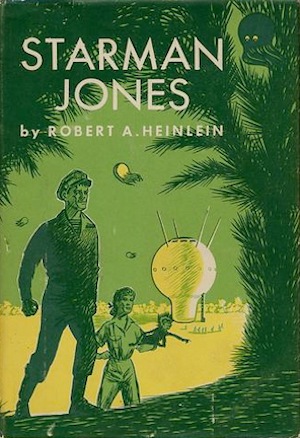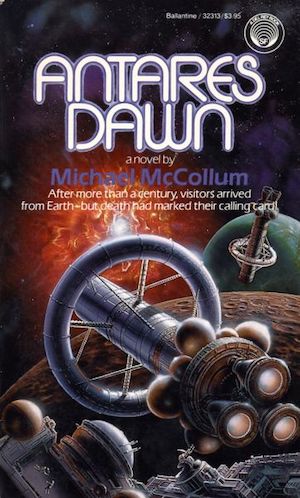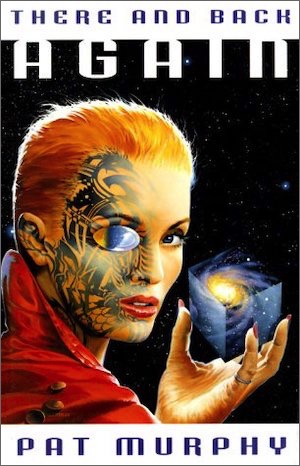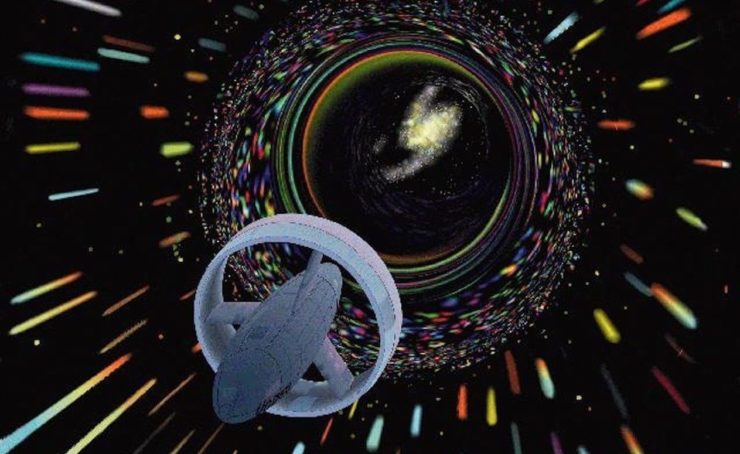Wormholes and other means of providing instant access between distant fixed points are narratively convenient. They make it possible to get characters from point A to point B without dying of old age en route. Wormholes (or their equivalent) constrain interstellar travel so that, for example, people cannot simply flee combat by going FTL, nor can they emerge above a planet before their photons arrive to carry out an unstoppable bombing run. From an authorial perspective, such constraints are very, very useful.
Once their attention had been drawn to wormholes some time in the 1980s, authors leapt on the chance to use them in fiction. See, for example, how frequently the phrase appears in American English.
Which isn’t to say that all authors have used the same kind of wormholes to fix plot holes. Consider these five examples:
Starman Jones by Robert Heinlein (1953)

This novel long predates the heyday of wormholes; it doesn’t even use the phrase. But it uses spacetime anomalies, which are just like wormholes. With one exception: they don’t just have an entrance and an exit. They can take you all sorts of interesting places if you enter the anomaly with the wrong approach vector. A small error calculating the vector and a hapless ship could find itself light-millennia off-course, with no clear idea how to get home. No prizes for guessing if this happens to the Asgard, the very ship on which the eponymous Starman Jones is serving. Nor is this worst that will happen to the unfortunate castaways.
***
Starrigger by John DeChancie (1983)

The Skyway that connects the known worlds is unusually user-friendly. The sufficiently advanced aliens who created the Skyway planted their Kerr-Tipler objects on the surfaces of habitable worlds, allowing truckers like Jake to travel from world to world (provided only that their sufficiently robust vehicles follow a precise path past the rapidly spinning, hyperdense towers). At present, human knowledge of the Skyway is rudimentary. However, if someone were to come into possession of the fabled (and quite possibly mythical) Roadmap, a multitude of routes would be open: routes through space and even time. Which is why when whispers begin circulating that Jake has the Roadmap, his life gets very complicated indeed.
***
Antares Dawn by Michael McCollum (1986)

The foldlines—wormholes by another name—that facilitate interstellar travel in McCollum’s Antares series are the product of entirely natural forces. Several centuries into the Great Migration, humanity discovered foldlines had an interesting quirk. When the forces shaping them change, so too do the networks of foldlines. The Antares supernova shuffled local foldlines, leaving the Valeria system isolated for centuries. The eventual appearance of a ship from outside the system sparks celebration.
It turns out that there is little reason to celebrate. The battered TSNS Conqueror brings news of a war between humans and aliens—a war in which the alien side is determined to exterminate their human enemies.
***
There and Back Again by Pat Murphy (1999)

As it so often the case, the aliens who created the network of wormholes laced through the Milky Way did not see fit to leave either a user’s manual or even a map. Humans had to learn the peculiarities of the wormholes. through trial and error. One characteristic was soon obvious: wormholes are one-way. Getting home requires either negotiating a loop of wormholes (if one exists) or decades—even millennia—of sublight travel.
None of which should matter to norbit Bailey Beldon, content as he is to live in his cozy asteroid habitat. Unfortunately for Bailey, the honest norbit informs the Farr clone family that he is in possession of a battered message beacon addressed to the Farrs. Bailey simply wants to hand over the Farrs’ property…getting conscripted into a quite possibly one-way quest for mythical treasure is an unpleasant, unwanted extra.
***
Banner of Souls by Liz Williams (2004)

The Chain (yet another name for wormholes) facilitates rapid travel between the Solar System’s worlds by side-stepping through the Eldritch Realm, the realm of the dead. Convenience is purchased with exposure to Cosmic Horror.
This fact is not what occupies the characters in this novel. In their society, all reproduction is artificial and purposeful: individuals are created to fill a particular niche or serve a given end. Martian warrior Dreams-of-War’s purpose, for example, is to protect young Lunae, a living weapon who may mean the difference between a grim future and one that is much, much worse.
***
No doubt you have your own favourite variations on the basic theme of wormholes. Tell us about them. You will find a handy comment section below.
In the words of Wikipedia editor TexasAndroid, prolific book reviewer and perennial Darwin Award nominee James Davis Nicoll is of “questionable notability.” His work has appeared in Publishers Weekly and Romantic Times as well as on his own websites, James Nicoll Reviews and Young People Read Old SFF(where he is assisted by editor Karen Lofstrom and web person Adrienne L. Travis). He is a four-time finalist for the Best Fan Writer Hugo Award and is surprisingly flammable.










